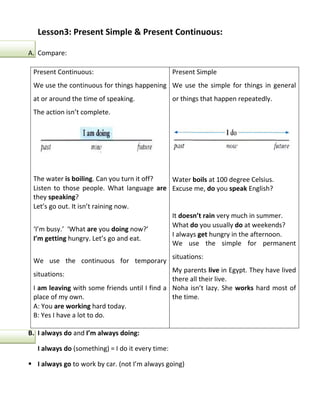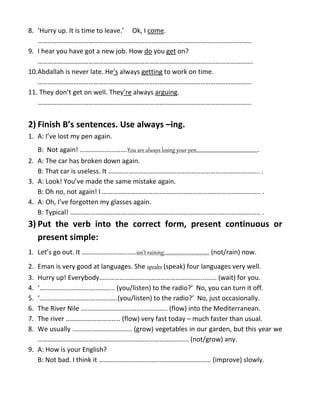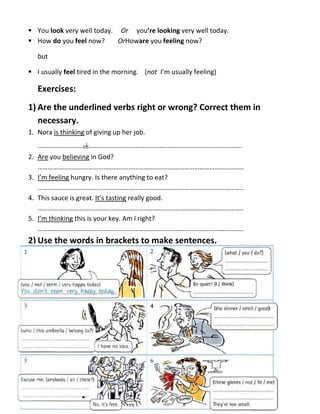This document provides a lesson on the present simple and present continuous tenses in English. It compares how these two tenses are used and provides examples. Key points include:
- Present continuous is used for temporary actions happening now while present simple is used for permanent or repeated actions.
- Certain verbs like "think" have different uses depending on the tense.
- Exercises are provided to practice using these tenses correctly in sentences.










